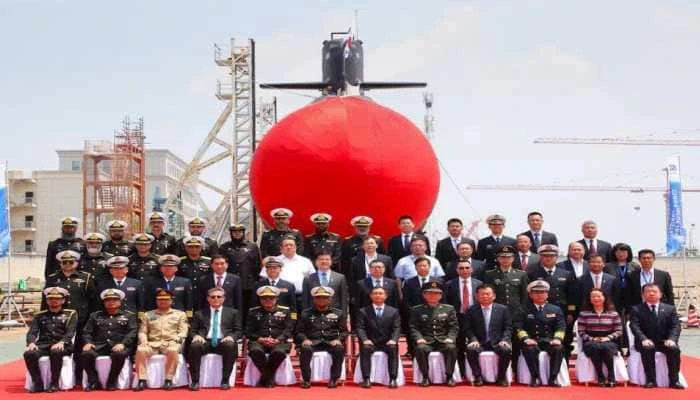Islamabad/Beijing: China has formally handed over a Hangor-class submarine to Pakistan during a ceremony held at the Wuchang Shipyard in Wuhan.
This delivery marks an important development in Pakistans naval modernisation efforts. Chinese media described the submarine as a notable advancement with strategic implications for the region, while Pakistani authorities have presented it as a substantial enhancement to their maritime defense capabilities.
However, important operational questions remain regarding the submarine’s integration into the fleet and the extent to which Pakistan can fully utilise its features.
The Hangor-class submarine, an export variant of Chinas Yuan-class platform, is equipped with Air-Independent Propulsion (AIP), advanced sensors and stealth features. Although the vessel has been launched, it is not yet combat-ready. Key phases such as outfitting, sea trials and extensive crew training are still required.
In previous procurements of Chinese-origin military equipment, including frigates, surveillance vessels and tanks, Pakistan has encountered delays and performance challenges that slowed the translation of assets into real capability.
Technical Profile, Engineering Challenges
The AIP system enables submarines to remain submerged for extended periods without surfacing, an advantage in underwater operations. The Hangor-class utilises the CHD-620 engine, which is a Chinese reverse-engineered version of the German MTU-396 diesel engine.
Germany ceased exports of the original engine, prompting China to develop its own version. The CHD-620, however, lacks a strong record of operational use outside China and remains untested across foreign navies in long-term deployments.
Thailands own Yuan-class submarine project has faced prolonged delays of over 1,200 days due to uncertainties around the same powerplant. In submarine warfare, engine noise and reliability are vital factors. Excessive noise or mechanical instability can compromise a submarines stealth profile.
The Indian Navys expanding undersea surveillance infrastructure is particularly adept at identifying such acoustic signatures. Although AIP extends underwater endurance, it does not inherently reduce detectability or eliminate regional geographic limitations.
Indias Expanding Maritime Surveillance, ASW Capabilities
India has been steadily building a layered and integrated anti-submarine warfare (ASW) network in the Arabian Sea. This development creates significant operational hurdles for any Pakistani submarine deployment.
Given Pakistans geographic position, submarines departing from Karachi or Ormara must travel through shallow and acoustically noisy coastal waters, areas under constant monitoring by Indian ASW units.
During previous tensions, such as those surrounding Operation Sindoor, Pakistan repositioned naval assets closer to the Iranian border or Gwadar Port to avoid exposure. The Indian Navy continues to strengthen its maritime dominance. The upcoming commissioning of INS Arnala (June 2025), supported by shallow-water ASW crafts, P-8I Poseidon maritime patrol aircraft, MH-60R Seahawk helicopters and Kamorta-class corvettes armed with indigenous Varunastra torpedoes, will significantly enhance Indias detection and engagement capabilities.
India has also deployed underwater sensor arrays and the Maareech anti-torpedo decoy system to reinforce its kill chain. These systems create a dense surveillance zone that any Hangor-class submarine must traverse if it attempts operational deployment. This level of maritime domain awareness presents persistent risks for Pakistans undersea fleet.
As Pakistan continues to receive additional Hangor-class submarines, full operational readiness remains a future milestone. By the time the third vessel completes trials and enters service, India is projected to have further consolidated its surveillance infrastructure and offensive capabilities across the Arabian Sea. This evolving environment highlights the operational challenges Pakistan may face in deploying its submarine fleet effectively.
